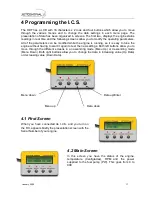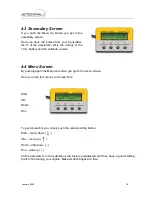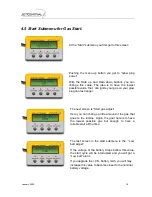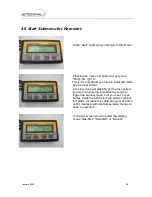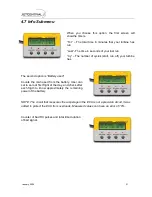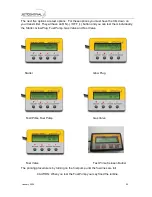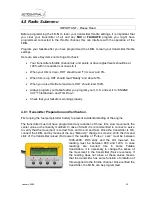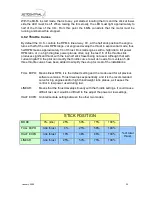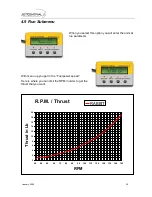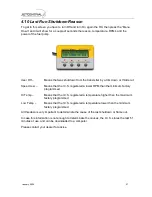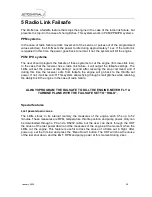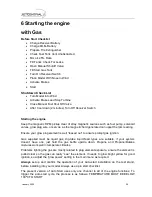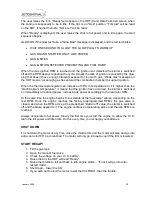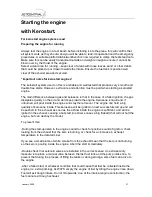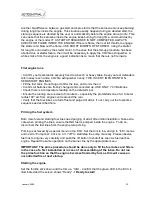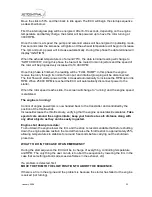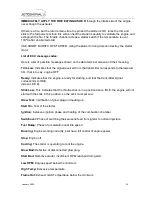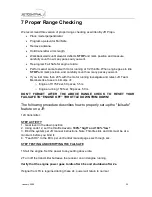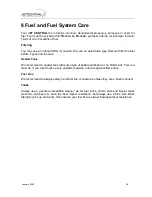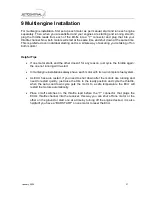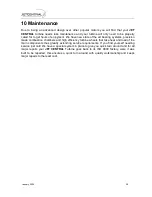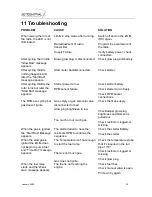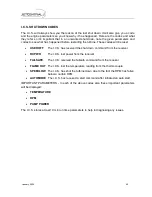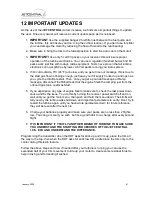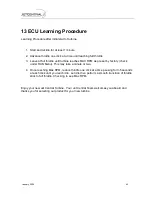
January, 2009
31
Starting the engine
with Kerostart.
For kerostart engines please read
Preparing the engine for running
Always test the engine in a test bench before installing it into the plane, this will confirm that
all system work as they should, and you will be able to learn its operation and the emergency
procedures. A suitable platform/table/workbench is now required to clamp the test stand onto.
Make sure this can be easily transported outside and weight enough to ensure it cannot be
blown over by the thrust of the engine.
Select a clear area for running
– keep clear of areas with loose leaves, sand or other debris
that could be picked up or drawn towards the intake. Ensure the fuel tank is position well
clear of the exhaust area and secured.
“Important notes for kerostart engines”
The kerostart system used on this is a reliable and well tested that produce very smooth and
trouble free starts. However, extra care and attention must be paid when starting a kerostart
engine.
The main difference between gas and kerosene is that in the case of a failed ignition, the gas
dissipates quickly on the air and don't keep inside the engine. Kerosene is liquid and, if
unburned, will pool inside the engine and stay there forever. The engine can hold a big
quantity of kerosene inside. This kerosene will be ignited on next successful start up and will
be pushed to the exhaust as soon as the airflow inside the engine is sufficient, and will be
ignited in the exhaust, causing a hot start (in extreme cases a big fireball) that will not hurt the
engine, but can destroy the model.
To prevent this:
-During the start-up listen to the engine sound to check for positive sound of ignition, check
looking from the exhaust that the kero is burning, or check for an increase in exhaust
temperature in the data terminal.
If you see a small plume of white smoke from the exhaust mean that the kero is not burning,
so the kero is pooling inside the engine. Abort the start immediately.
-Double check that solenoid valves are installed in the correct sense. An extra security
measure is to place a manual valve between the last fuel tank and the pump intake line, to
prevent that during the process of filling the tanks or during storage, some fuel can arrive to
the engine.
-After a failed start, or whatever condition that could cause that fuel be collected inside the
engine (i.e. extra priming), ALWAYS empty the engine of fuel by tilting the engine nose down.
Fuel will exit trough intake. Do not tilt upwards, due at the internal engine construction; the
fuel cannot exit trough exhaust.
Summary of Contents for Rabbit
Page 1: ...OPERATION AND MAINTENANCE MANUAL...
Page 14: ...January 2009 13...
Page 15: ...January 2009 14...
Page 16: ...January 2009 15...
Page 17: ...January 2009 16...

